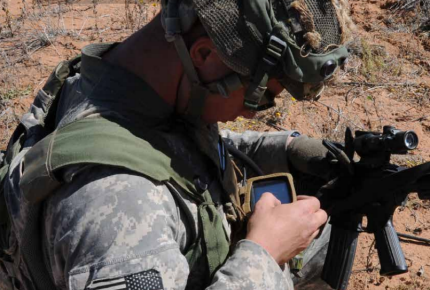DISA plan outlines a mobile, cloud-based military
The agency’s Strategic Plan for 2014-2019 says mobility is the "primary benefit" of the Joint Information Environment.
The Defense Information Systems Agency’s latest five-year plan paints a picture of future military operations that reflects current technology and budgetary trends, with a heavy focus on mobility and a secure, interoperable cloud infrastructure. Wired workstations are on the decline, mobile devices are on the rise and biometric identifiers will automatically connect users to any authorized device.
The agency’s Strategic Plan for 2014-2019 acknowledges the drawdown in Afghanistan and constricted budgets but emphasized the need for a smaller force to be adaptable.
“Our nation and our leadership have emphatically stated we must transition, as we conclude 13 years of war,” Air Force Lt. Gen. Ronnie Hawkins, DISA’s director, says in an introduction. “Not only must we transition to a post-conflict and financially constrained era, but we must also transition to a smaller, yet equally lethal military. Our focus must be on cybersecurity sovereignty, agility and innovation, given its more dominant role today.”
At the heart of the agency’s strategy is the Joint Information Environment, the Defense Department’s plan to create a secure IT architecture that accommodates all of the services, as well as coalition partners. DISA, as the lead of JIE’s Technical Synchronization Office, is working to synchronize fixed and wireless systems, consolidate data centers and streamline applications.
A big focus will be on mobile computing for both secure and unclassified networks. “Mobility is the primary benefit of JIE,” the plan states. DISA plans to move away from wired workstations and thin clients in favor of systems that support mobile devices. One of DOD’s goals is to create mobile networks that provide real-time situational awareness and command and control information to warfighters on the battlefield.
The move to mobile also will change authentication. “We will see a shift from traditional hard token credentials to virtual positive identity supported with biometrics,” according to the plan. “Users will be granted access upon approaching their access point by systems that will immediately recognize the authorized user and grant network access.
“With JIE as our backbone, we will evolve to truly enable the JIE vision: To connect any credentialed user, via any properly authorized device, to anywhere in the cloud, at any time. Mobility devices are the ultimate access methodology of the JIE.”
The plan also covers other areas of focus for DISA, whose job is to provide command and control, information sharing and a globally accessible enterprise information infrastructure to support joint military operations.
Among its focus areas are cyber operations, taken in concert with the U.S. Cyber Command, and DOD Cloud Services, including Defense Enterprise Email, Enterprise Portal Services, Unified Capabilities, Big Data storage and heuristics, virtual desktops and other services.
DISA said the goal is to pursue technologies that lower the total cost of ownership while improving security.





